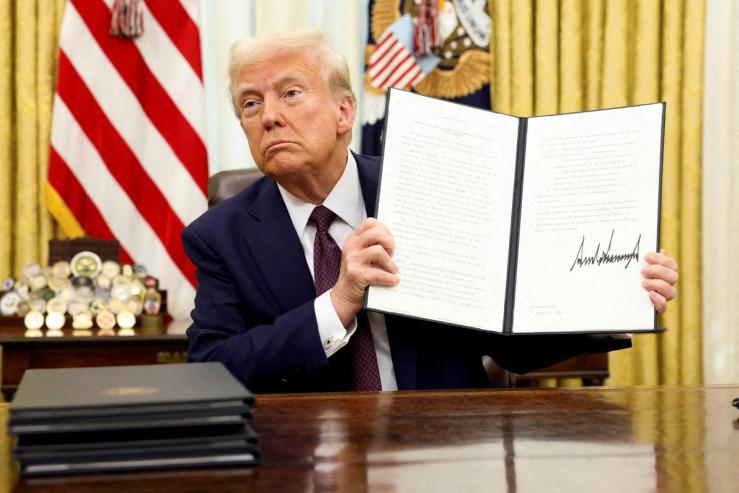The Scoop
Trump on Wednesday unveiled his long-awaited AI Action Plan, a national strategy accompanied by a trio of executive orders meant to replace his predecessor’s safety-first directives. The new roadmap focuses on deregulation and industry growth to better compete against China.
In response, left-center policy think tank Third Way published an AI agenda for Democratic leaders, which it shared first with Semafor. “There’s a lot of people who [think] that Democrats in Congress don’t have a very good sense of what the party wants or should want on AI,” Third Way’s AI policy advisor Mike Sexton told Semafor. “This agenda is trying to lay out a vision, giving [them] the tools to work with industry to move things forward.”
The framework paints Democrats as too pessimistic about AI, while it says Republicans prioritize deregulation over risk assessment. But there’s alignment between the parties on regulating deepfake pornography and synthetic child abuse material, which could kickstart a series of legislative actions, Sexton said. Third Way’s report also said Democrats should work on initiatives like allocating federal land to build data centers, attracting foreign AI talent, and adopting robots for government services like parks management and public sanitation.
More than 80 labor, civil rights, and other groups cosigned their own response to Trump’s AI agenda, naming it the “People’s AI Action Plan.” The six-sentence statement calls for prioritizing the needs of American people over Big Tech lobbyists, though it doesn’t offer any specific policy guidance.
Rachyl’s view
The Trump administration’s AI strategy is expected after the president’s very public break from Biden-era safety precautions just days into reoccupying the White House. But flip-flops can go both ways, and tech companies may have to grapple with another reversal if Democrats win the presidency in 2028.
And a national action plan doesn’t have much teeth without a federal framework approved by Congress. Much of the groundwork is happening instead at the state level, where bills from California, New York, and others are shaping the safety rules in which AI models can operate. The patchwork of regulations could end up preserving more left-leaning, safety-centric principles across the US.
It’s a playbook taken from the EU — that it’s easier for tech companies to follow the strictest rule across the board than disparate rules locally. Trump is trying to take on local rulemaking too, recommending AI-related federal funds bypass states with strict regulations. That means the whiplash for businesses will continue, regardless of who’s in office.
The View From the Trump Administration
Despite Trump previously attempting to pass a moratorium on state rulemaking, the new framework said the government “should also not interfere with states’ rights to pass prudent laws that are not unduly restrictive to innovation.”
By limiting the AI funding that goes to states with strict regulatory environments, Trump hopes to prevent limiting the effectiveness of the money.
Notable
- Trump’s national strategy includes a crusade against what he deems “bias” from major model providers, and he called on the government to contract only with AI companies “who ensure that their systems are objective and free from top-down ideological bias.” It is unclear how that criteria will be measured.
- New obligations required by the EU’s AI Act, the world’s first major piece of AI legislation, are set to take effect at the beginning of August despite pushback from AI companies who asked the rules to be delayed by years.


